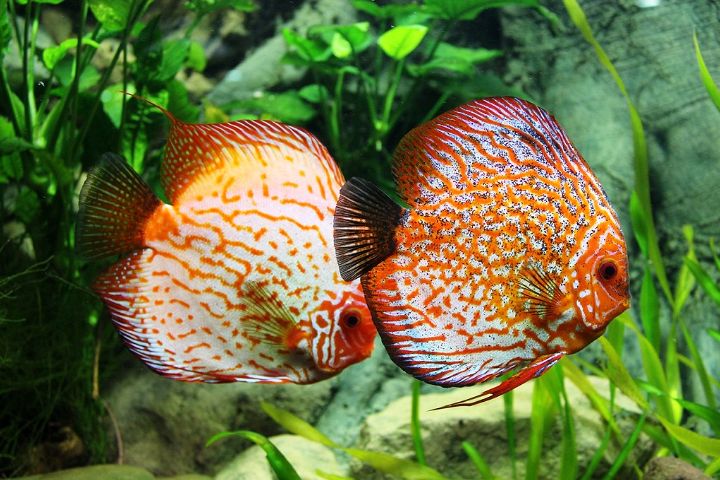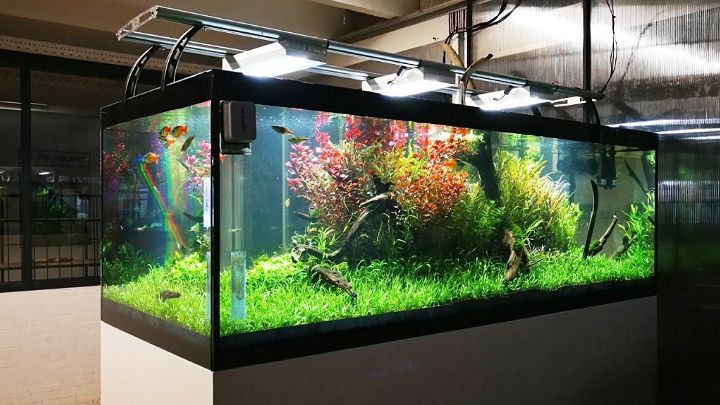An essential aspect of keeping your fish healthy is to make sure that the habitat, which is the aquarium, in this case, is kept healthy too. To keep the aquarium environment safe, you must perform regular maintenance. Routine maintenance helps to create a stable and suitable aquarium. If everything in the aquarium is running smoothly and correctly, there may not be any need for a significant change.

A significant increase or decrease of any of the vital water parameters will require careful and immediate action. It is therefore crucial that you know what maintenance you need to perform. Following a regular maintenance routine will ensure that you can notice and sort out any problems with the aquarium and ensure the fish are healthy.Essential maintenance is not a time-consuming activity if the aquarium tank is set up correctly and you go about it right. Here are a few things to consider when maintaining aquariums in your home the right way:
1. Balancing The pH
pH is the measure of acidity and indicates how acidic or basic the fish aquarium is. The pH of the tank is an important aspect to consider when maintaining the aquarium. Some fish prefer alkaline water, while some fish prefer slightly acidic water. You should, therefore, regularly test the water to ensure it is maintained at the correct pH that is suitable for the fish species that you are keeping. The wrong pH could be harmful to the fish and even cause death to the fish if not well balanced.
2. Cleanliness
Cleanliness is an essential aspect of any fish aquarium. It would help to keep your tank clean and healthy. Cleaning the tank ensures that you have a thriving ecosystem in the aquarium. It would help if you perform regular water changes and remove any algae or particles present in the tank. Make sure there is enough freshwater in the tank. Provide oxygen input into the tank and maintain the appropriate lighting. A clean fish tank provides a clear view of the aquarium.
3. Checking the Temperature
Changes to the temperature inside the aquarium are an essential aspect of the health of your fish. You should, therefore, test the temperature in the tank daily as slight deviations to the temperature in the fish tank could have a significant impact on the ecosystem in the aquarium. Fish are susceptible to even small temperature changes since water bodies have a stable temperature. The changes could lead to the death of the fish if not dealt with as soon as possible.
4. Overfeeding
Overfeeding is a common problem, especially among first-time aquarium owners. Too much food could have fatal effects on your fish. The excess food will remain floating around in the tank polluting it and making it unfriendly for the fish. It would be best to be careful about the amount of food you feed your fish and make sure they can finish the provided food. It would also help to provide a balanced diet for the fish, especially if there are more than one fish species in the aquarium for a balanced ecosystem. One type of food that perfectly suits the needs of one species may be inappropriate for another species. Ensure the needs of all the available species are met to ensure the health of the fish in general.
5. Disease
It would be best to pay close attention to the aquarium for any fish showing symptoms of illnesses. The fish may seem dull or may keep still in one corner of the tank. Fish are susceptible to sickness. It could be as a result of adapting to the food and water in the tank. It can also be due to the introduction of new fish to the tank. Be on the lookout for any signs of diseases and act quickly to prevent death and infection to the others. It would be best to remove the sick fish to prevent infection to others and contamination of the fish tank.
6. Add Driftwood
Driftwood is the perfect way to create a naturalistic look in your aquarium. Driftwood comes in a variety of shapes, sizes and colors and can be used to create underwater caves, docks, or even an underwater habitat for live plants.
Driftwood for fish tank: Driftwood is an excellent decoration for a fish tank. It is attractive, and it breaks down into an organic substrate over time. Aquarium driftwood provides a place for hiding places, and it is safe to come in contact with your fish.
Recommended Maintenance Routine

A proper aquarium maintenance routine will go a long way in ensuring the health of the fish in your tank. It may, however, prove to be impractical and unhealthy to clean every single surface in the tank on a daily or weekly basis. To minimize the effect cleaning has on helpful bacteria, cleaning the colony-rich areas, such as the substrate and filter, should be minimized. It can disrupt the delicate ecosystem in the tank. It would help to test the water a few days after a complete cleaning session to make sure everything is alright.
1. Daily
Things you can do daily include:
- Keeping a close eye on the fish during feeding as behavioral changes could indicate possible problems.
- Ensure the equipment is working correctly.
- Remove uneaten food.
- Top off the water level.
2. Weekly
Every week, you could:
- Count your fish. In the eventuality that fish die, smaller fish species can decompose quickly, leading to ammonia and nitrate spikes resulting in high nitrate levels in the aquarium.
- Clean the aquarium walls.
- Siphon the substrates.
- Wipe down outside surfaces.
- Change 10 – 15 % of the water in the tank.
- Test the water in terms of pH, carbonate hardness, and nitrate levels.
3. Monthly
Every month, you can:
- Rinse or replace the filters and cartridges.
- Inspect the connections and other parts to ensure proper operation.
- Clean the top part of the aquarium to ensure proper lighting.
- Trim live plants as required.




